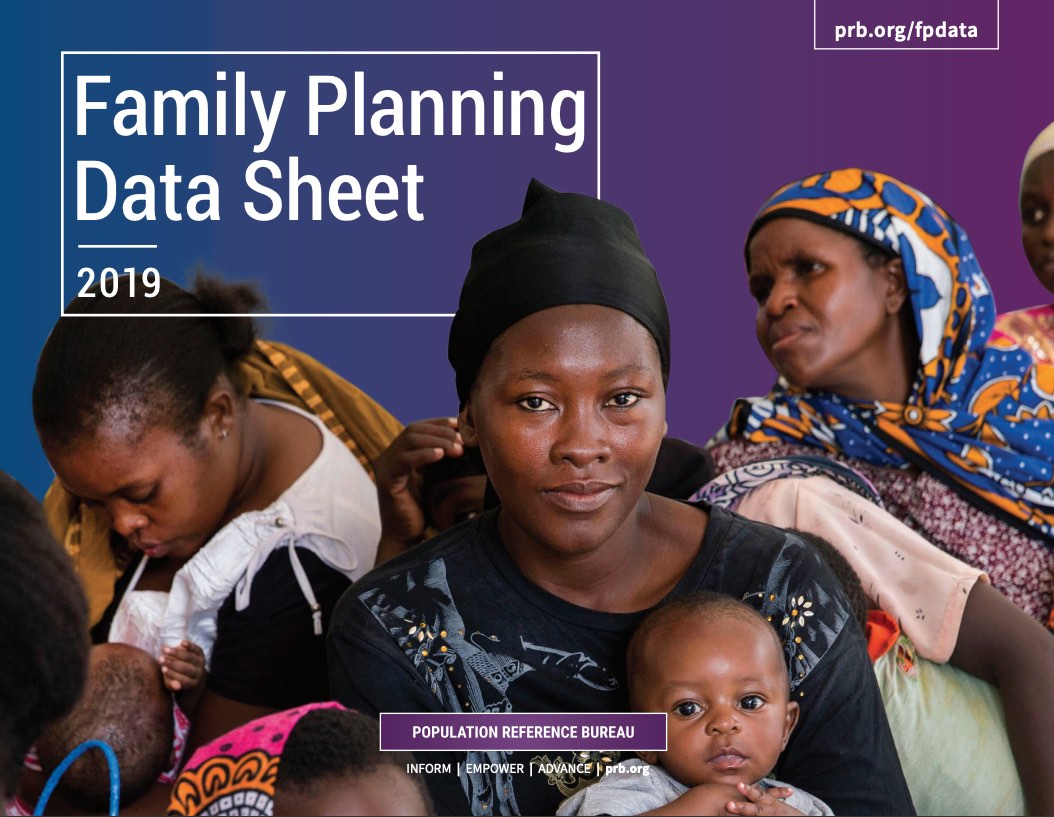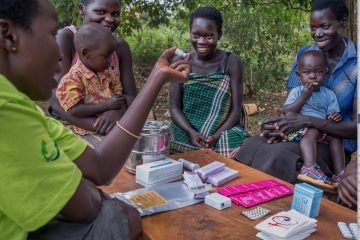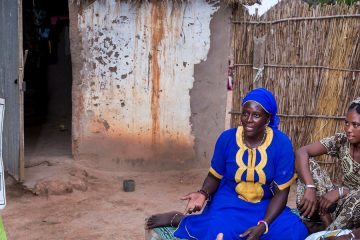
2019 Family Planning Data Sheet Highlights Family Planning Method Use Around the World
Contraceptive use varies substantially around the world, both with respect to total use and the types of methods used.
PRB’s 2019 Family Planning Data Sheet provides the latest estimates of family planning indicators for approximately 160 countries around the world. Featured indicators include the percentage of married women using modern and traditional family planning methods, unmet need for family planning, use of modern contraception by wealth group, and demand for family planning satisfied by modern methods. The data sheet (également disponible en téléchargement en français) and accompanying interactive web feature include in-depth data visualizations and analysis on variations in desired family size by sex and education, method mix over time, reasons for non-use of contraception by age, and the relationship between unmet need and total demand for family planning.
Globally, 62 percent of married women ages 15 to 49 use a method of family planning and 56 percent use a modern method. Examples of modern methods include the pill, intrauterine devices, implants, injectables, condoms, and sterilization. These rates are twice as high among women living in high-income countries (67 percent and 60 percent, respectively) compared to women living in low-income countries (34 percent and 29 percent, respectively)—a result of differences in access to, availability of, and demand for modern methods of contraception. At a country level, use of any method of family planning among married women can vary significantly, ranging from 4 percent (South Sudan) to 88 percent (Norway).
Highlights from the 2019 Family Planning Data Sheet
- Substantial differences in modern contraceptive use are evident across countries. The lowest levels of use can be found in many of the world’s poorest countries, such as the Democratic Republic of the Congo, where fewer than 15 percent of married women of reproductive age use a modern method.
- Education may influence men’s and women’s desired family size. Both men and women with at least some secondary education report wanting fewer children than those with no secondary education. In countries such as India and Haiti, where the desired number of children is already low, differences are minimal.
- Unmet need for family planning can help identify where greater resource investments are needed. Unmet need may exist because women desire to space (they want a child after two or more years) or limit (they want no more children) childbearing.
- Married and unmarried women’s reasons for not using contraception vary by age. While some of the top reasons cited remain consistent, women ages 25 and older in developing countries tend to have stronger concerns about side effects and may oppose contraceptive use more frequently. Those under age 25 often cite postpartum breastfeeding as a reason for not using contraception.
- Method types remain limited, even as contraceptive use increases. Despite substantial increases in contraceptive use across countries since the mid-1990s, some countries, like Ethiopia, experience a skewed method mix, where use is concentrated in only one or two method types.
Through the variety of indicators and features it details, the 2019 Family Planning Data Sheet illustrates how countries can take immediate steps to improve their voluntary family planning programs and services. For instance, countries can use available data to determine priority investments (with an emphasis on either strengthening service delivery and the family planning supply chain or generating demand though education programs), expand access to a full range of methods, and address key barriers among women with unmet need.

 ">
">
 ">
">


